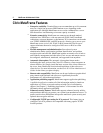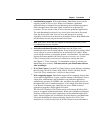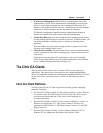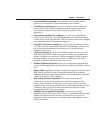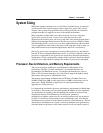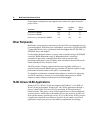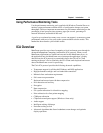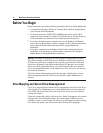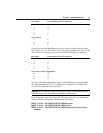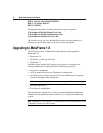
&KDSWHU,QWURGXFWLRQ
6\VWHP6L]LQJ
MetaFrame supports multiple users on a Windows Terminal Server. A multiuser
system requires more system resources than a single-user system. This section
contains some system sizing guidelines that can help you decide on a hardware
configuration that will support your users with optimal performance.
Most companies find that their users can be placed in one of two categories:
typical users and power users. A typical user generally uses one or two
applications but normally only one at any given time. Little actual program data is
transferred between the client and server, and the users rarely use Object Linking
and Embedding (OLE). A power user is a more sophisticated user who uses three
or more applications, often with several active at the same time. Data is often cut-
and-pasted between local and remote applications, and OLE is used heavily.
Obviously, power users consume more resources than typical users; this must be
factored in when configuring MetaFrame servers. A good rule of thumb is that one
power user is equivalent to two typical users in processor utilization and memory
requirements. All the configuration examples in this section are based on numbers
of typical users; adjust them according to the number of power users anticipated.
3URFHVVRU%XV$UFKLWHFWXUHDQG0HPRU\5HTXLUHPHQWV
The processor and bus architecture are fundamental to MetaFrame server
performance. The ISA (AT bus) architecture is low-bandwidth and is not
recommended for MetaFrame servers. Use a higher-performance bus, such as
EISA or PCI for best performance. All of these buses support the high sustained
data transfer rates typical of a MetaFrame server.
The memory requirements for MetaFrame and Windows Terminal Server are
16MB of RAM, plus 4MB for each typical user or 8MB for each power user. In
many cases, adding RAM has a larger effect on system performance than
upgrading to a faster processor.
It is important to note that the processor and memory requirements for MetaFrame
scale linearly. This means you can roughly double the number of users supported
on a multiprocessor-capable system by doubling the number of processors and
doubling the amount of RAM memory. For this reason, purchase a
multiprocessor-capable system, even if you initially purchase only one processor,
to allow for convenient system scaling as your requirements grow. Note that not
all multiprocessor systems scale the same way because of bus differences. The bus
architecture in a multiprocessor system is crucial for multiprocessor performance
with more than four processors, and vendor-specific drivers are usually required.




